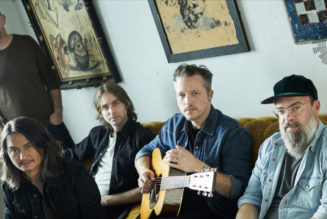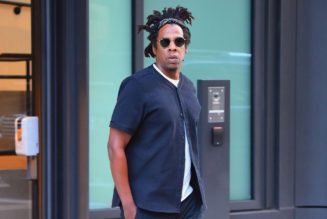On Oct. 11, the quiet but mammoth impact of the Rolling Stones’ drummer Charlie Watts is celebrated with the release of Charlie’s Good Tonight: The Life, the Times, and the Rolling Stones: The Authorized Biography of Charlie Watts (available here). Authorized by Watts’ family and featuring forewards from both Mick Jagger and Keith Richards, the book delves into the incredible life of a man who came from a working class background and served as the anchor and guiding light of one of the world’s greatest rock bands from the early sixties until his death in 2021. Written by journalist Paul Sexton, a Billboard contributor who has also written for The Times (London), The Guardian and Daily Telegraph, Charlie’s Good Tonight draws on his 30-plus years of experience writing about the Stones as well as exclusive interviews with Watts’ family, friends and fellow musicians who knew him best.
Below, Billboard is running an exclusive excerpt from Sexton’s book which details Watts’ role in turning the Stones into a carefully plotted touring juggernaut with iconic visuals, which changed the live music business in the late ’80s and beyond.

The 1990s began with Charlie’s uncredited role as design consultant with the Rolling Stones becoming more significant than ever. Now reaping the dividends of their peerless fame as they never did on their first go-round, they may have been en route to the status later disdainfully described by the New York Times as ‘an organization with long off-seasons and unending profits’. But vast sums from their empire were poured back into the business to make sure that they remained bigger, better and more spectacular than any of their largely benign competition.
Charlie was no stadium afficionado, but he understood the basic economics. Otherwise, he mused in a 1998 conversation, ‘You’d be playing a month in a town to play to 30,000 people. Where would you play, in a 3,000-seater hall? So it’s to accommodate that, and hopefully you can fill it up. And that’s what we’ve become. It’s our own fault, or pleasure, or whatever you call it. That’s how we’ve directed what we do. That’s how the world of doing what we do has gone.
‘And you’re in the world of following yourself, really,’ he went on. ‘You get the occasional band like U2, “How did they do in Denver?” and you think, “Blimey, we’d better do as well as them.” It’s like friendly rivalry, in a way. And often, it’s just you that’s been there, so it’s, “Why aren’t we doing as well as last time?” and a worry goes out.’
Charlie and Mick worked closely on the Steel Wheels tour with the late set designer Mark Fisher and lighting director Patrick Woodroffe. It won one of trade magazine Pollstar’s first awards for most creative stage production, in an itinerary that went on so long, the European leg had a different name, Urban Jungle, and a look all its own.
Fisher was the founder of Stufish, the set designers whose relationship with the Stones continued all the way to 2022’s SIXTY festivities. As the company prepared for the launch of that European itinerary – sadly without Charlie’s new input – modern-day chief executive Ray Winkler told the Guardian about Steel Wheels.
‘The tour was, at the time, the biggest in terms of sheer volume of different elements used to construct the stage. It took over 100 men to build it. The stage stretched over 300ft and was flanked by 80ft high towers on each side that Mick Jagger appeared on for “Sympathy for the Devil”. This is when the modern-day touring industry was born – when architecture and music came together to create these rock spectaculars.’
Mick Taylor, as a once and future collaborator but also as an admirer, agreed wholeheartedly. Talking to me in 2013, during his temporary reintroduction to the fold for the Stones’ 50th-anniversary celebrations and beyond into the 14 on Fire tour, he mused: ‘I’d say the beginning of the modern-day Stones in terms of theatre presentation was … well, it was always very theatrical and musical as well, but in terms of big presentation and stage lighting, there was such a huge development between ’69 and the ’80s. Their really big, massive tours all started with Steel Wheels, really. I saw them in 1999, at Wembley Stadium, and they were fantastic.’
Charlie’s daughter Seraphina glows when she talks about her father’s huge importance in those uncredited visual decisions. ‘He was behind the creative process, that mega-touring, those stages, before U2, before any of those guys,’ she says. ‘Because of his design history, he did merchandising, designing of stages. Art direction, really. He was involved with the lighting, all the behind-the-scenes stuff. They have a really fantastic team and the same people [each time], and I don’t think people know quite how involved he was.’
Charlie downplayed it, naturally. ‘That’s Mick, really, and I’m with ’im. That’s us. Then when we get on the road I tend to leave it, but he’s very aware of a lot more. He works very hard. Also people go to him more. Thank goodness they’ve learned not to come to me,’ he laughed. ‘“Grumpy old sod, don’t go to him.”’
After a year and 115 shows, the combined Steel Wheels/Urban Jungle pageant bowed out with two more concerts in August 1990 at Wembley Stadium, for an awe-inducing total of five there. At one, I distinctly remember Ronnie playing a solo and milking the applause a little more than usual – only to be told that we were cheering news of England scoring a goal in the World Cup. ‘I went “Wow, I didn’t know I was playing that well,”’ said Wood.
For all the absurdity of a man yearning to be performing in a jazz club playing to a combined total on the two legs of the tour of 5.5 million people, Charlie told me soon afterwards that doing those gigantic shows was painless. ‘The Stones are very easy to play with. In this day and age it’s very easy to play, because …’ Here came another of his unexpected pauses and changes of direction. ‘Let’s see … I blame Led Zeppelin for the two-hour-long show. Now, you see, we jumped in a few years from doing 20 minutes, all the hits and off – the Apollo Revue, we’ll call it – we went from doing club dates which are two sets a night, which was great fun, to doing two minutes, because you got pulled off the stage, to doing 20-minute Apollo-type shows to doing, thanks to Led Zeppelin, this two-hour long show.
‘If you’re Jimmy Page, you can do that, and [with] Bonham’s 20-minute drum solo. It wasn’t about that with us, it was a different thing. I don’t like doing drum solos, period. I don’t hear things like that. When Zep, we call ’em, used to do that – what are we, early ’70s, I suppose – that was hard work physically, because the monitors weren’t so good, and the volume you played at. As a drummer, I’m talking about. But now the sound equipment is so sophisticated. The hardest thing with a drummer on those big stages is to be heard. Now, it’s done for you, virtually. The amplification is there, so I just play naturally, at the volume I feel like playing, in this little cage I live in, and they adjust the volume of it.’
Chuck Leavell’s arrival in the Stones’ touring company had begun with the 1982 European tour and continued through the next two albums, so he was a no-brainer of a choice when the Steel Wheels circus hit the road. A Southern rock bastion, previously admired as a member of the Allman Brothers Band, he was another important component in the future of a group that had no intention of retreating into posterity. In time he was elevated to the role of music director of the Stones’ shows, with an especially vital channel of communication with Charlie.
Leavell had seen the Stones as a 14-year-old, paying his $3 to see their package show with the Beach Boys and the Righteous Brothers at Legion Field in his hometown of Birmingham, Alabama in 1965. He was in the crowd again for the 1969 US tour, then met Charlie for the first time when the Allmans made their debut performances in Europe, their second show being as Knebworth headliners in July 1974. Unusually, Charlie was present at the record company party, where Chuck asked him in small talk ‘How’s it going, man?’ The drummer’s answer was as inscrutable as ever. “Do you mean for me, or for the others?” Leavell remembers: ‘He was very cordial, except for the short answers.’
Charlie, like all the Stones, made everything seem instinctive. But a great deal of rehearsal and symbiosis goes into mastering a two-and-a-half-hour set containing people’s cherished musical memories, and Leavell has been instrumental in that process. ‘Charlie played on some of the most iconic records ever made, obviously,’ he says. ‘But when we would go to present those things live, he couldn’t always remember all the exact things he did, or where the changes would come.
‘That’s largely where my role as musical director came into play, to help Charlie when section B was going to come up. He would always look over to me for that, and it was very special for me to be able to give him those cues. It wasn’t just Charlie, I did it for Mick – sometimes he’s out there trying to work the crowd and he would look at me and I could say “verse” or “chorus”. But Charlie especially, we had that kind of a bond and that was very endearing for me. It meant a lot to me to be able to do that.’ The Stones’ investiture of long-standing friend and collaborator Steve Jordan as Charlie’s locum and then successor brought admirable continuity, but also an inevitable change in the stage dynamics. ‘Quite frankly on the [2021] tour [the resumption of North American No Filter dates] I missed it, because Steve Jordan has a great musical mind and he doesn’t really require that.’
Charlie had immense pride in the Stones’ dedication to their work, but knew that it was somewhat at odds with the unjust idea that their collective hedonism somehow undermined their commitment to their craft. ‘Unbeknown to a lot of people, the Rolling Stones are theatrical and terribly professional,’ he said. ‘They always have been, about whatever large or small facet of talent they have. The band has only ever not turned up once, and I only ever missed a show because I got the wrong date,’ he said, referring to the 1964 diary malfunction we heard about earlier. ‘Even as young tearaways, which we never really were … a lot of that was bullshit. I know people who were much more … whatever the word is. Newspapers are dreadful things, bless ’em. I can’t read them. I flick through the cricket page, and that’s it.’
[flexi-common-toolbar] [flexi-form class=”flexi_form_style” title=”Submit to Flexi” name=”my_form” ajax=”true”][flexi-form-tag type=”post_title” class=”fl-input” title=”Title” value=”” required=”true”][flexi-form-tag type=”category” title=”Select category”][flexi-form-tag type=”tag” title=”Insert tag”][flexi-form-tag type=”article” class=”fl-textarea” title=”Description” ][flexi-form-tag type=”file” title=”Select file” required=”true”][flexi-form-tag type=”submit” name=”submit” value=”Submit Now”] [/flexi-form]











Tagged: Books, entertainment blog, music, music blog, NEWS, Rock